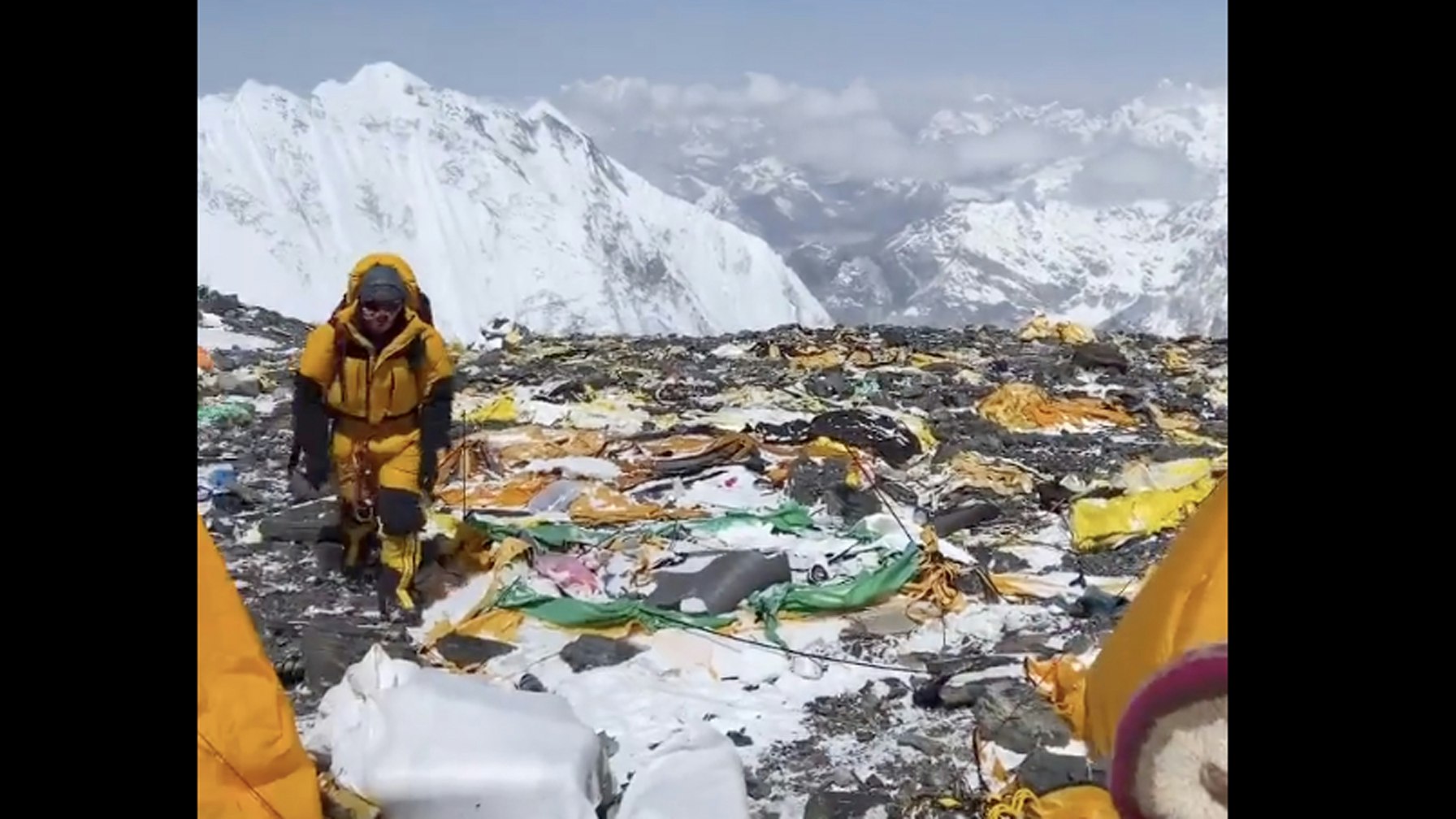Dr. Joe McGinely is back home in Casper this week after calling off an attempt to summit Mount Everest, and he has no doubt that was the right choice.
Since he came back down the mountain last week, the death toll on Everest this season doubled from six to 12. Five more climbers have been reported missing and are also likely dead, McGinley told Cowboy State Daily on Friday.
That could make this one of the deadliest years on Everest in recent memory, he said. In 2015, 25 people died on the mountain, but many of those people were killed in base camps when a massive earthquake in Nepal triggered avalanches.
Just Too Many People
The crowds on Everest this year also are awful, he said.
“This was an odd year,” he said. “The China side of Everest was closed, which forced even more people over to the Nepal side. The weather was also rough for the entire first half of May, which compressed the climbing season and made the crowds even bigger.”
Climbing season on Everest usually lasts only until the beginning of June, he said. After that, high winds can make ascents all but impossible.
During a telephone call from Katmandu, Tibet, on May 17, McGinley told Cowboy State Daily that he and his guide were still several thousand feet from the summit of Everest when they decided to turn back because of the crowds and mounting death toll.
“Knowing when to turn around is just as important as knowing when to keep climbing,” he said Friday.
The crowds were so bad, there were waiting lines on some of the final sections of the ascent, including parts of the mountain that are in the “zone of death.” That’s the zone above 26,000 feet in altitude when oxygen depredation can easily turn deadly, said McGinley, who is a sports medicine physician and founder of McGinley Orthopedics.
Having to wait in line that far up the mountain increases the chances of frostbite, as well as depleting one’s precious supply of bottled oxygen, he said. It is absolutely vital for climbers to spare enough oxygen for their descents.
“Most of the deaths actually take place on the descent,” he said. “On the way up, you still have oxygen, you’re still full of adrenaline trying to make that final push.”
So, carless climbers who use all their oxygen on the way up can die on the way back down, he said.
And standing still for too long, even in heavily-insulated mountaineering gear, can bring on frostbite, McGinely added.
“When I was back in the hotel after coming down off the mountain, I saw a lot of people with hand wraps and foot wraps because they had suffered frostbite,” he said.

Doesn’t Blame The Nepalese
Mount Everest is the world’s tallest peak. It soars to an altitude of 29,031 feet, 8.5 inches at its summit on the China-Nepal border in the Himalayas.
Coming in from the Nepal side is more popular, McGinley said, and the Nepalese government is usually far more liberal about issuing climbing permits than the Chinese government is.
The Nepalese also are less strict about screening climbers and allowing more inexperienced people onto the high slopes.
Even though the Nepal side is becoming increasingly more commercialized and crowded, McGinley said he doesn’t blame the locals.
“A lot of those villages in Nepal are poor. For Nepal, it (Everest mountaineering) is a big portion of their economy. The funds from it are how many people in those villages make their living. The opinion there seems to be, ‘If you’re an adult, you can do what you want,’” even if the risks are deadly.
McGinley plans to return to Everest, although he’s not sure when. When he does, he plans to go in from the China side. It expected that by next year, the Chinese government will start issuing climbing permits again.
“The ascent on the China side is a bit more technical,” he said. “Longer and more technical, although technically still safer, because you don’t have to climb through ice falls, like you do on the Nepal side.”
Oxygen Depredation Kills
There are a few particularly hardcore climbers who ascend Everest without bottled oxygen. McGinley said he opts to go with oxygen.
But even when using bottled oxygen, climbers must be mindful of the effects of oxygen depredation. Those can include diminished mental capacity, greater susceptibility to cold and lethargy, McGinley said.
“It’s really odd, you get a tired, almost lazy feeling,” he said. “You don’t want to do anything at all. You start to think, ‘I don’t need sunscreen. I probably don’t need to eat right now because I’m not really hungry.’ But it’s vital at those elevations to keep using sunscreen and eat to keep your strength up.”
Still Wants To Go After ‘The Seven’
Despite the setback on his first Everest attempt, McGinely said he has every intention of competing the “Seven Peaks on Seven Continents” challenge — the crown jewel of mountaineering.
It involves climbing the highest peak on each of the seven continents. Those include Everest in Asia, Kilimanjaro in Africa, Mount Elbrus in Europe, Denali in North America, Mount Aconcagua in South America, Carstenz Pyramid in Indonesia (counting for the Australian continental plate) and Vinson Massif in Antarctica.
McGinely is short only Everest and Vison Massif.
He initially thought he would delay tackling Vison Massif until he had completed Everest. But now, he’s decided he’ll probably take on the Antarctic peak first, perhaps this coming January.
The climbing season on Vison Massif is “from about two weeks before New Year’s until about two weeks after,” he said.
Mark Heinz can be reached at Mark@CowboyStateDaily.com





